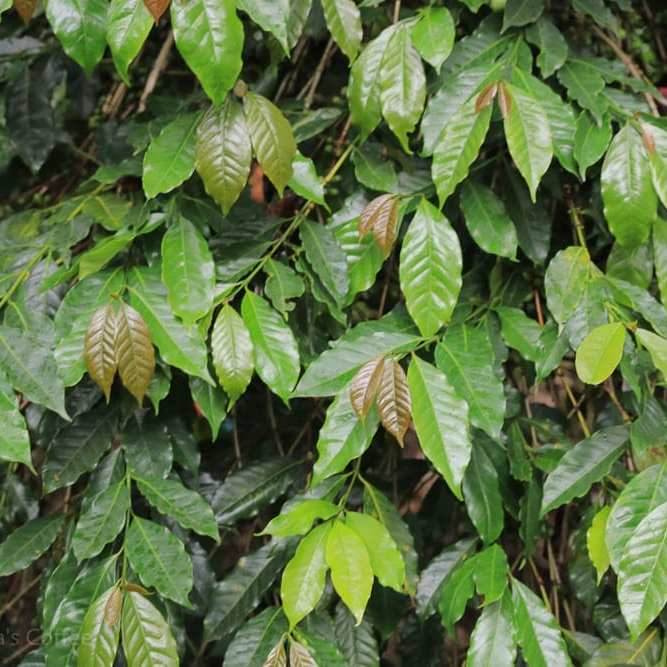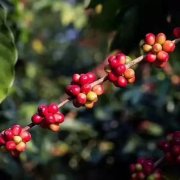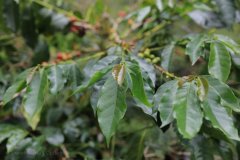What is Java java coffee? where can I buy Java java coffee?
There are several types of boutique coffee Java Rambung coffee or Abyssinia, but they are not from Ethiopia, but from Indonesia. Abyssinia 3 = AB3. Dutch plant researcher PJS Cramer introduced the variety in 1928 and is said to be from the Ethiopian seed bank. It is more Cultivar) was initially considered to be the choice of Typica. In the mid-20th century, local farmers brought it to Cameroon through Vilmorin, a company that bought Java coffee bean seeds from Porteres, a famous breeder.
In Cameroon, keeper Pierre Buhamun observed that it was partially resistant to coffee berry disease abbreviated as CBD: a fungal disease that causes cherries to die and fall to the ground before ripening. A fungus that causes cherries to die and fall to the ground before it ripens (CBD) is a common problem among coffee growers in Africa and is ideal for small farmers with little input. After nearly 20 years of breeding, it was released and cultivated in Cameroon in 1980-90. It was initially considered to be the Typica's choice. But genetic fingerprint analysis of molecular markers shows that Java was selected from the Ethiopian local variety Abyssinia.

Purchase
Mixing different places of origin in this way allows bakers to retain the flavor of traditional mocha Java Blend, even if they cannot be exported from these countries because of intra-regional conflicts and trade barriers. Importers of raw coffee from some countries (the United States) have been completely banned from importing unbaked raw coffee and other products from Yemen.
Because of political conflicts, it is almost impossible to buy coffee in Yemen, so most of the mocha Java coffee is a mixture of other single origin. The quality of buying mocha Java coffee varies from roaster to roaster, depending on their goal of taste (imitating the original, or focusing on chocolate because of the customer's view), so it is recommended to try a variety.
No matter where you order, be sure to buy freshly baked whole beans, not on the shelf. Retailers that sell branded coffee, such as grocery stores and Amazon, have long distribution channels-coffee is roasted in batches and then packaged, transported and processed in warehouses-all of which can take weeks or even months. you'll get a stale cup of coffee at the end of the day.
Important Notice :
前街咖啡 FrontStreet Coffee has moved to new addredd:
FrontStreet Coffee Address: 315,Donghua East Road,GuangZhou
Tel:020 38364473
- Prev

How to choose Brazilian coffee beans, ranking by Brazilian coffee bean grading screening system.
Brazil is the largest bean-producing country in the world, with a total land area of 8.5149 million square kilometers and the largest country in South America. Last year, Brazil produced 61.62 million bags of coffee beans (60kg each). With such a large output, how are its coffee beans graded? The origin of Brazilian coffee: coffee began to be introduced into Brazil in the 18th century. At present, the emerging middle class in Brazil is promoting coffee in
- Next

What is the Ateng in coffee? Sumatra and Indonesian island coffee are dominated by Ateng?
An improved Aten coffee Ateng is the common name for Catimor coffee, which is widely grown in Sumatra and other Indonesian islands. Ateng has several subtypes and is the common name for Catimor coffee widely grown in Sumatra and other Indonesian islands. More Timorese choice categories Timor variety Hibrido de Timor abbreviated as HdT
Related
- Beginners will see the "Coffee pull flower" guide!
- What is the difference between ice blog purified milk and ordinary milk coffee?
- Why is the Philippines the largest producer of crops in Liberia?
- For coffee extraction, should the fine powder be retained?
- How does extracted espresso fill pressed powder? How much strength does it take to press the powder?
- How to make jasmine cold extract coffee? Is the jasmine + latte good?
- Will this little toy really make the coffee taste better? How does Lily Drip affect coffee extraction?
- Will the action of slapping the filter cup also affect coffee extraction?
- What's the difference between powder-to-water ratio and powder-to-liquid ratio?
- What is the Ethiopian local species? What does it have to do with Heirloom native species?

